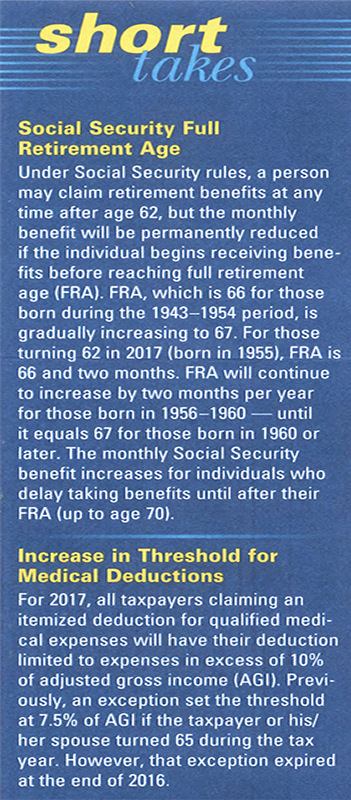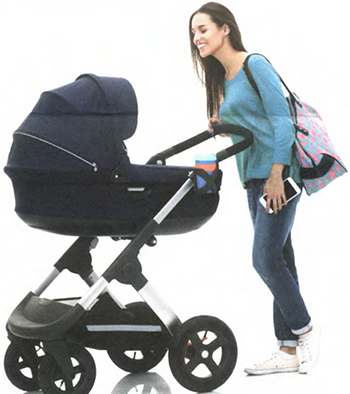The "Nanny Tax"


If you hire someone to work for you in your home, you may have federal employment-tax responsibilities. The "nanny tax" rules can apply when you hire any type of household worker - a nanny, housekeeper, gardener, etc. - who is not an independent contractor. *
Social Security and Medicare taxes (FICA)
Both the household employer and the employee must pay FICA tax. Generally, the Social Security tax is 6.2% of wages and the Medicare tax is another 1.45% (a tot.al rat.e of 12.4% for Social Security and 2.9% for Medicare). In 2017, you are responsible for paying (and withholding the employee's share) of FICA taxes if you pay yom household employee $2,000 or more in cash wages. H you expect to meet the annual threshold, it's smart to begin withholding right from the start to avoid having to withhold additional taxes once the employee's pay reaches that threshold.
Income tax
As a household employer, you are not reqni red to withhold federal income taxes from your employee's pay, but you can if your employee asks you to do so.
Federal unemployment tax (FUTA)
Your FUT A obligation begins when you pay $1,000 or more in cash wages to household employees in any calendar (juarter of the current or past year. Employees have no FUT A obligat.ion.
Contact us -with your questions about the "nanny tax."
* There are no FICA tax requirements for babysitters; who are under age I8 if child care is not their principal occllpation.
Tax Benefits of Net Operating Losses
Most businesses have good years and bad years. However, wit.h proper planning, even a bad year can be helpful from a tax perspective. Where business deductions exceed gross income, a taxpayer may have a net operating loss (NOL) t.hat can he used to offset income in another tax year, potentially generating a refund of previously paid taxes.

Eligibility
NOLs are available to individual business owners, corporations, estates, tnlsts, anel charitable organizations with umelated business income t.ax. Partnerships and S corporations do not take NOL deductions, t.hough their partners and shareholders may use "pass-through" losses on t.heir own returns.
Operation
The general rule is that a taxpayer may cany an NOL back two years and forward 20 years, though celtain limited exceptions may apply. For example, an individual with an NOL that was caused by a casualty, theft, or disaster may use a three-year canyback period.
In general, the taxpayer will carry back an NOL to the earliest. year it. can be used and t.hen carry it forward, year by year, until it is used up. The taxpayer may also elect. 1.0 forego t.he two-year carryback and carry the loss forward for the 20-year period. However, the general preference is to use an NOL sooner rather than later, because a dollar of tax saved today is generally worth more than a dollar saved in the future.
Calculation
Calculat.ions of NOLs can be complicated. For example, a noncorporate taxpayer's NOL is calculated without regard t.o any personal exemptions or NOLs from other years, and certain deductions for capital losses and nonbusiness items are limited .


